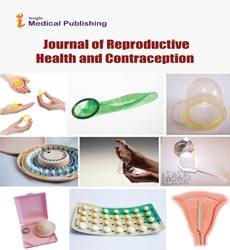Biological Process and Exercise in Female
Samy Gotlieb
Samy Gotlieb*
Department of Reproductive Health and Research, University of Queensland, Brisbane, Australia
- *Corresponding Author:
- Samy Gotlieb
Department of Reproductive Health and Research
University of Queensland, Brisbane, Australia
E-mail: gotlisamy@who.int
Received Date: October 11, 2021; Accepted Date: October 16, 2021; Published Date: October 21,2021
Citation: Gotlieb S (2021) Biological Process and Exercise in Female. J Contracept Stud Vol 6 No.2:6.
Due The possibility of ladies practicing to the world class level is somewhat new, in spite of the fact that according to the present point of view this may appear to be curious. A few sorts of athletic movement were for numerous years considered improper for ladies, and exercise during pregnancy was disapproved of. Indeed, even distance running was considered unseemly until relatively as of late; a 1500 meter race for ladies was excluded from the Olympic Games until 1972, and the ladies' long distance race was excluded until 1984. Envision that. This liberation of athletic movement for ladies was resembled by a fascinating perception: in 1964, 90% of ladies competitors taking an interest in the Tokyo Olympic Games had a customary feminine cycle, however when of the Montreal Olympic Games in 1976 just 43% had a standard cycle. There are many justifications for why ladies foster oligoovulation, and there may have been many explanations behind this change.
However, the expanding support of ladies in additional, also, more actually requesting, sports was logical a significant factor. Despite the fact that there are not many achievements that mark the point where ladies overall turned out to be altogether more athletic, a marker in the United States was the presentation of Title IX of the Education Amendments of 1972, which required schools and universities getting government awards to give similar freedoms to young ladies concerning boys. The impact of this government procedure was surprising. By 1978, just a short time after presentation of the change, the extent of young ladies taking an interest in group activities had expanded from 4% to 25%.
Almost certainly, an expansion of comparable extent occurred in cooperation in no team sports too. There were gainful results for ladies' general wellbeing; a subsequent over 20 years later showed that ladies who had more prominent freedom to take part in games while youthful had lower BMI, lower paces of stoutness, and revealed being all the more genuinely dynamic than ladies who were not managed the cost of these chances.
However, the increment in ladies actual work had—of course— some unfortunate results too. Depending on their picked athletic action, devoted investment often required either caloric limitation (for instance, in world class aerobatic) or supported caloric use (significant distance running), driven by the need to create a specific aggregate. Shuffling caloric admissions and consumptions, joined in some with the mental what's more, prevalent burdens of needing to win, not remarkably prompted feminine aggravations including amenorrhea. The feminine aggravations have been causally connected to an energy lack (caloric admission deficient for the consumption needed for work out) that precludes development and regenerative necessities for quick (endurance) needs; what's more, they can be switched by expanding energy availability.
The fluctuating recurrence and seriousness of the feminine aggravation might have a hereditary foundation: ladies with useful hypothalamic amenorrhea that outcomes from practice molding have been shown (now and again) to have transformations in qualities controlling GnRH ontogeny and action. Stomach peptides like ghrelin and adipocytokines for example, leptin, the two of which control food consumption, may likewise be engaged with these feminine disturbances. The potential for hurt through the mix of athletic action and caloric limitation was recognized 20 years prior with the main portrayal of the female competitor group of three: disarranged eating, amenorrhea, and osteoporosis. The importance of this mix drove the American College of Sports Medication to distribute a "Position Stand" on the point in 1997 what's more, again in 2007, encouraging doctors to evaluate for the tern ion what's more, to set up for suitable administration. As this College has pushed, it is imperative for sound female competitors to change their caloric admission to make up for practice consumption.
Open Access Journals
- Aquaculture & Veterinary Science
- Chemistry & Chemical Sciences
- Clinical Sciences
- Engineering
- General Science
- Genetics & Molecular Biology
- Health Care & Nursing
- Immunology & Microbiology
- Materials Science
- Mathematics & Physics
- Medical Sciences
- Neurology & Psychiatry
- Oncology & Cancer Science
- Pharmaceutical Sciences
